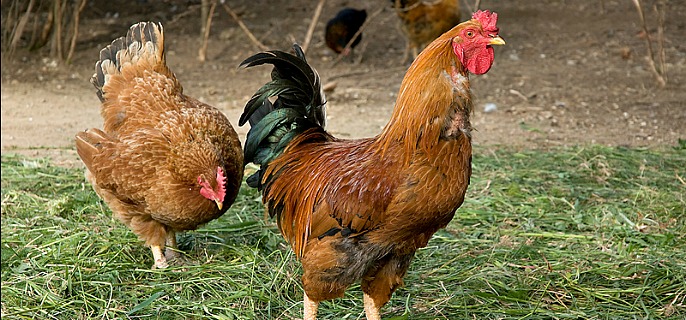
PHOTOS COURTESY OF ODA
Recent detections of avian influenza in commercial poultry in the southeast United States, including Alabama, Georgia, and Tennessee, have caught the attention of animal health officials throughout the states. While Oregon has so far avoided detections of bird flu this spring in commercial and backyard flocks, the vigilance remains high – and necessarily so.
The strains of avian influenza virus are naturally occurring in wild waterfowl, it’s always there,” says State Veterinarian Dr. Brad LeaMaster of the Oregon Department of Agriculture. “It’s a constant test of a person’s biosecurity measures. If we end up getting a detection of avian influenza in a backyard flock or commercial operation, we know somewhere there was a breach in biosecurity.”
On one hand, Oregon can be considered lucky to be free of bird flu detections at this time. However, perhaps Oregon is making its own luck through strong and robust biosecurity measures taken by poultry owners who understand the threat of avian influenza.
“I like to tell people we haven’t detected it yet, but that doesn’t mean it’s not out there and it’s not an excuse to let our guard down,” says LeaMaster.
ild waterfowl potentially carrying highly pathogenic bird flu virus are beginning their spring migration over Oregon and other states in the Pacific Flyway. More birds traveling increases the risk that they can come in contact with domestic poultry and spread the virus. As part of routine surveillance of wild birds, there have been two detections this past year of highly pathogenic H5N2, one in Alaska, the other in Montana. An H7N9 is the specific strain of avian influenza now impacting poultry in the southeastern states. The current strains do not pose a risk to the food supply or public health.
“The different strains of avian influenza virus can exist in both high pathogenic and low pathogenic forms as it circulates in the wild waterfowl populations,” says LeaMaster. “The waterfowl don’t get sick, but if the virus gets into another species or domestic poultry, it can multiply quickly. There’s also a chance it can switch from low path to high path and become very deadly to poultry.”
In 2014 and 2015, Oregon became the first state to detect the high path H5N2 and H5N8 viruses in domestic backyard poultry in Douglas and Deschutes counties. In both cases, backyard birds came in contact with wild waterfowl. Efforts by ODA and USDA kept the viruses from spreading to other domestic poultry. Since then, Oregon has not recorded any detection of avian influenza in domestic birds. However, the seriousness of the initial detection became evident later in 2015 when those same viruses– H5N2 and H5N8– were responsible for huge losses of commercial poultry in California and the Midwest.
For the past couple of years, ODA has ramped up outreach and education efforts, particularly to backyard bird owners whose flocks might come in contact with wild waterfowl.
Just since October, ODA has distributed more than 13,000 individual pieces of outreach materials and have reached about 2,900 people at various events that attract backyard bird owners. Educational tools available for bird owners include pamphlets, brochures, videos, and basic face-to-face conversations.
One specific handout, recently produced by ODA, lists six simple steps to protect poultry:
· Keep your distance. Restrict access to your property. Keep your birds away from other birds. Prevent contact with wild birds, especially wild waterfowl.
· Keep it clean. Wash hands before and after working with your birds. Clean and disinfect equipment. Wear clean clothes. Scrub your shoes with disinfectant.
· Don’t haul disease home. Buy birds from reputable sources. Keep new birds separated for at least 30 days. Clean vehicles and cages.
· Don’t borrow disease from your neighbor. Do not share equipment. If you must, disinfect first.
· Know the signs. Early detection is critical to prevent the spread of disease. Check your birds frequently. Do not touch sick/dead birds.
· Report sick or dead birds. For domestic poultry, call ODA at 1-800-347-7028. For wild birds, call the Oregon Department of Fish & Wildlife at 1-866-968-2600.









